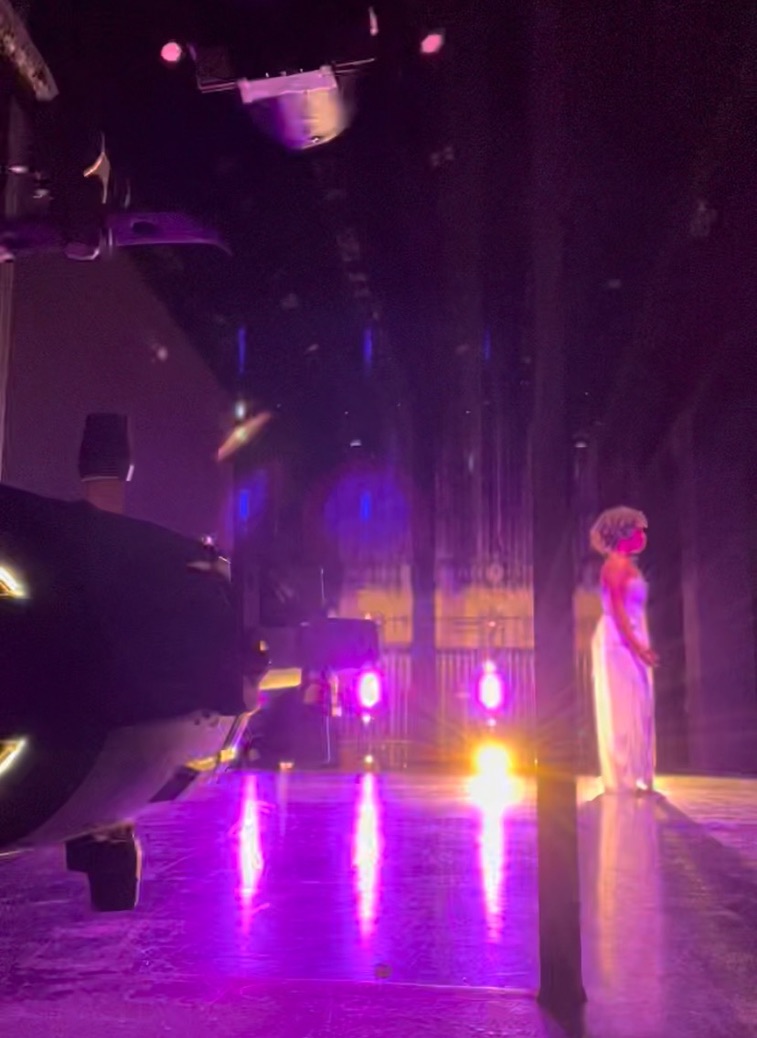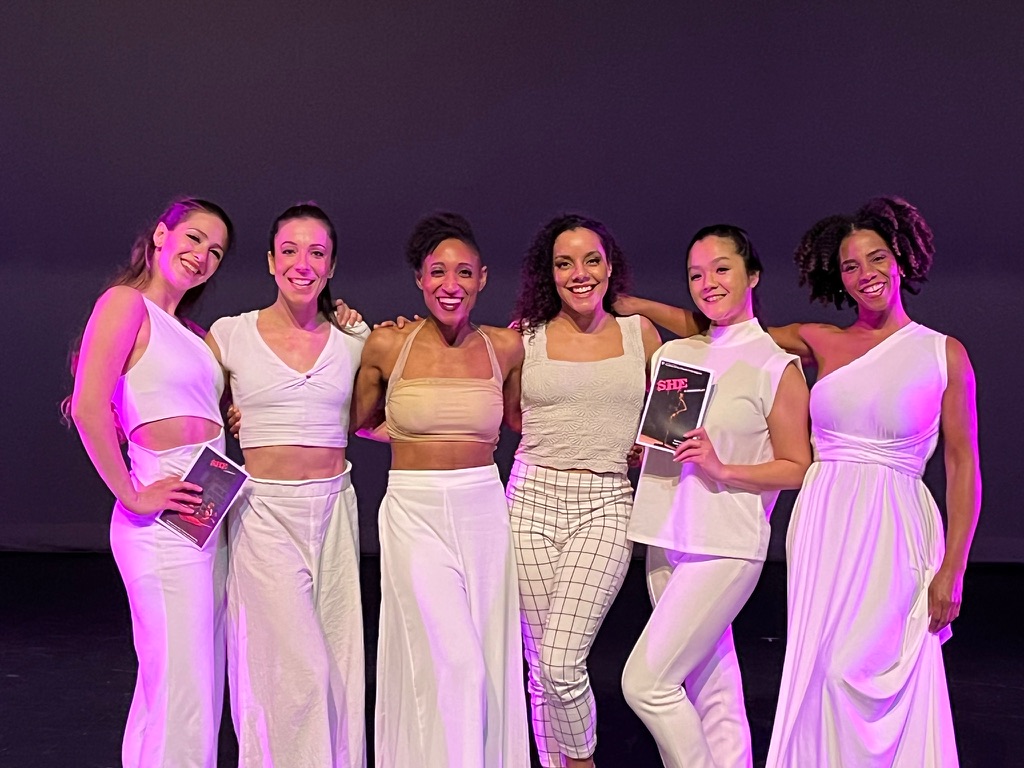Shortly after the pandemic began, I found myself taking longer walks than ever through New York City. On these walks, I craved rich storytelling that could transport me far from the social and political chaos of the times even if only for 90-120 minutes of my day. Any student of the performing arts learns that song, music, dance and drama are what occur when merely talking is no longer enough. Theaters are spaces to experience the catharsis that comes from witnessing a heightened interpretation of our reality, which at present is extremely heightened to begin with. While for years now, conversations with artists, educators, activists, and healers, writing and sharing my reflections of the unsettling state of the world via my blog, the occasional freelance article, podcast episode, or IG captions have served as important outlets for expressing  insights, frustrations, injustice, and inspiration that have been part of my experience as a Black woman, suddenly, these trusted outlets for relief were no longer sufficient. So before setting off on one of my long strolls, I would search for riveting audio fiction like The Left Right Game or Tumambay to immerse myself into, which did the trick of helping me to cope for a few weeks. Eventually, I seemed to run out of entertaining shows with themes that didn’t exacerbate my already heightened state of anxiety. To my surprise, my favorite Broadway show cast albums became the perfect balm. I would walk along the Hudson River with my AirPods on and occasionally shock a passerby with a random shout or belt of a note of a song. There was something richly satisfying in singing, or what I was actually doing which was screaming and shouting on one pitch or another. So I reached out to my old vocal coach and asked about zoom voice lessons and quickly signed up.
insights, frustrations, injustice, and inspiration that have been part of my experience as a Black woman, suddenly, these trusted outlets for relief were no longer sufficient. So before setting off on one of my long strolls, I would search for riveting audio fiction like The Left Right Game or Tumambay to immerse myself into, which did the trick of helping me to cope for a few weeks. Eventually, I seemed to run out of entertaining shows with themes that didn’t exacerbate my already heightened state of anxiety. To my surprise, my favorite Broadway show cast albums became the perfect balm. I would walk along the Hudson River with my AirPods on and occasionally shock a passerby with a random shout or belt of a note of a song. There was something richly satisfying in singing, or what I was actually doing which was screaming and shouting on one pitch or another. So I reached out to my old vocal coach and asked about zoom voice lessons and quickly signed up.
Instead of therapy, which I also needed for my mental health as racial terror consumed my media and psyche in the never-ending onslaught that included the murders of George Floyd’s, Ahmaud Arbery, Breyonna Taylor and too many more. I desperately needed a constructive and creative outlet for my rage, my grief, my deepening distrust of broken people and broken systems that kill, brutalize, oppress, sabotage, and ignore because reflecting, writing, nor talking weren’t quite adequate. On the other hand, singing regularly with no other motivation but to “release” was revelatory in its effectiveness for my ability to transmute grief and rage into something more constructive, and occasionally, to my surprise, even quite pleasant to the ear.
Then the theater reopened. I have had the time of my life since last fall seeing show after show, re-awakening my dormant theater artist from a deep many years long slumber. Again and again, I have transported by the new and groundbreaking works by artists of color the likes of which I have never seen. Among the most moving I’ve seen include Cullud Wattah, On Sugarland, A Strange Loop, and Thoughts of a Colored Man are among the most notable in both performance and gut-wrenching to mind-bending content. It has felt as if new theatrical forms are being born on a daily basis here in NYC, when really, the limitations placed on theater artists to fit into a dramatic storytelling paradigm that has historically reinforced white, Western narrative structure are being lifted and eliminated right before our very eyes. Theater has NEVER been better, in my view. Productions like Black No More, Clyde’s and Nollywood Dreams have breathed life into my whole entire being. The unbridled resilience, joy and ingenuity of these playwrights and creative teams have demonstrated that Black excellence simply is, and when given outlets for performance and digestion, all of humanity benefits.
Perhaps the most significant experience of “drama therapy” occurred for me last week, however. I stepped on stage to perform for the first time in over 10 years in She, a “choreoplay” by the formidable dancer, actor and choreographer, Jinah Nicole Parker. Originally an Off-Broadway theater and dance piece, our six women ensemble cast performed excerpts of the full show about racism, systemic oppression, violence and sexual violence, beauty, self-love, healing and sisterhood to Texas A&M University as part of a dance and theater week-long residency. Intimately exploring these issues was hard as hell, but whoa did it remind me once again of the healing power of the performing arts. There have been more heart-wrenching moments than I care to fathom these last couple years, during which what my soul requires most is to dance, sing and shout in the sacred space called a theater in order to keep from crying, and most importantly to properly digest the trauma of being a Black woman in a fragmenting world. As a mostly theater goer for many years now, I had almost forgotten what an untapped resource of power the theater can be for theater artists themselves. To be in Texas, mere miles from where Sandra Bland was murdered, and to retell her story and the stories of countless others through a creative project that would allow me to channel the overwhelming emotions I have felt in the provocative, demanding and humanizing way that only theater and dance can may be the most important thing I have done these last two years. Speaking truth about injustice. and even writing it, is simply no longer enough for me. This re-integration of my performing artist self, my healer self, my activist self, and my educator self is the only way I may survive these times. I look forward to more opportunities to bring my whole creative self to all that I do.
first time in over 10 years in She, a “choreoplay” by the formidable dancer, actor and choreographer, Jinah Nicole Parker. Originally an Off-Broadway theater and dance piece, our six women ensemble cast performed excerpts of the full show about racism, systemic oppression, violence and sexual violence, beauty, self-love, healing and sisterhood to Texas A&M University as part of a dance and theater week-long residency. Intimately exploring these issues was hard as hell, but whoa did it remind me once again of the healing power of the performing arts. There have been more heart-wrenching moments than I care to fathom these last couple years, during which what my soul requires most is to dance, sing and shout in the sacred space called a theater in order to keep from crying, and most importantly to properly digest the trauma of being a Black woman in a fragmenting world. As a mostly theater goer for many years now, I had almost forgotten what an untapped resource of power the theater can be for theater artists themselves. To be in Texas, mere miles from where Sandra Bland was murdered, and to retell her story and the stories of countless others through a creative project that would allow me to channel the overwhelming emotions I have felt in the provocative, demanding and humanizing way that only theater and dance can may be the most important thing I have done these last two years. Speaking truth about injustice. and even writing it, is simply no longer enough for me. This re-integration of my performing artist self, my healer self, my activist self, and my educator self is the only way I may survive these times. I look forward to more opportunities to bring my whole creative self to all that I do.


